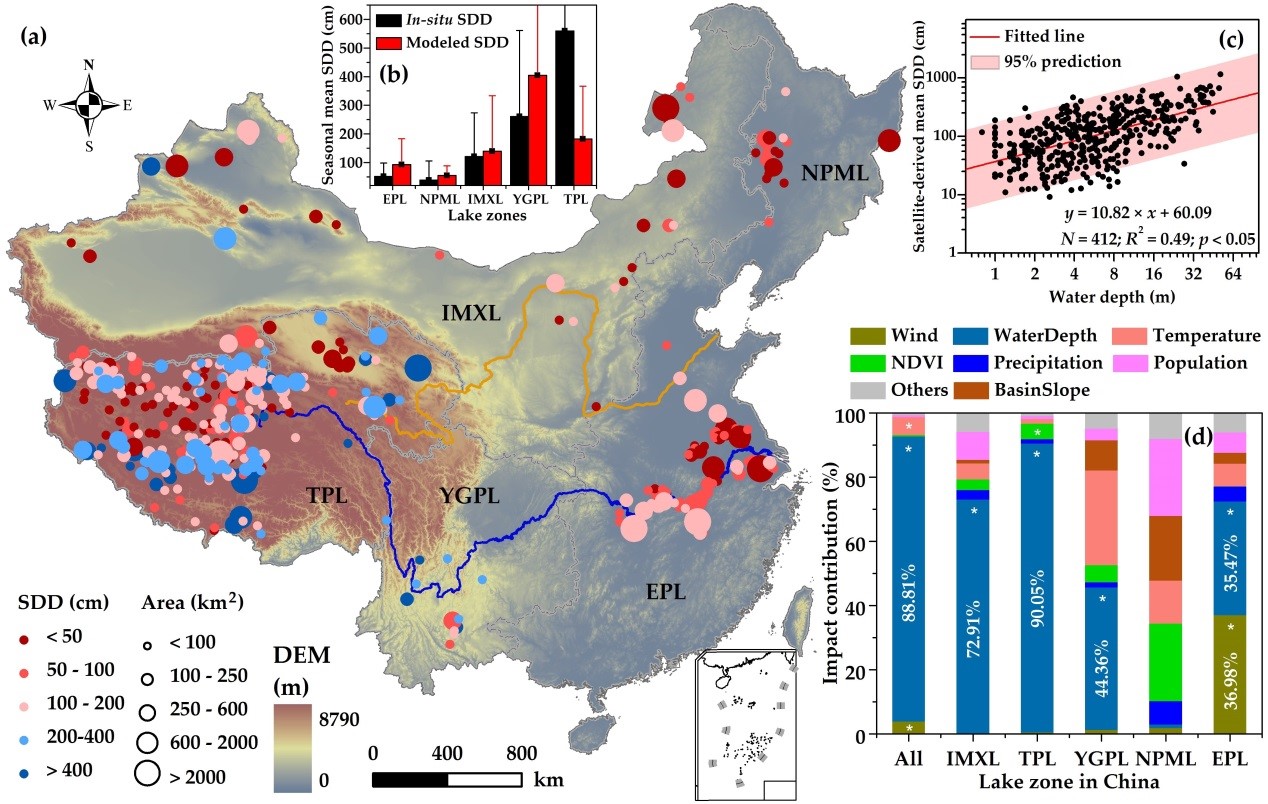Observations of water transparency in China’s lakes from space
Water transparency, usually denoted by Secchi disk depth (SSD), represents the first-order description of water quality and has important implications for the diversity and productivity of aquatic life. In China, lakes supply freshwater and ecosystem services to nearly a billion people. Therefore, real time monitoring of lake transparency is of great significance. Moreover, understanding how and why transparency varies in space and time in response to different driving forces is needed to understand, manage, and predict lake water quality. Based on the time-saving and low-cost Google Earth Engine cloud platform, this study developed a new algorithm for quickly mapping SDDs in Chinese lakes. SDDs were retrieved for 412 Chinese lakes (> 20 km2) for the period 2000–2018. Results demonstrated that lake water depth spatially differentiated transparency. Deep lakes usually had high transparency and water depth explained 88.81 % of the spatial variations. With increasing catchment vegetation coverage and lake water depth, 70.15 % of lakes witnessed increasing transparency during 2000–2018. Of these 42.72 % were significant (p < 0.05). Transparency of deep lakes was generally determined by phytoplankton density not sediment resuspension. Minimum transparency occurred in summer. Future increases in lake water levels in response to factors such as climate change may contribute to further improvements in transparency. Management should focus on controlling eutrophication and increasing vegetation cover in catchments.


Dong Liu, Hongtao Duan, Steven Loiselle et al. 2020.International Journal of Applied Earth Observation and Geoinformation. DOI: https://doi.org/10.1016/j.jag.2020.102187.
